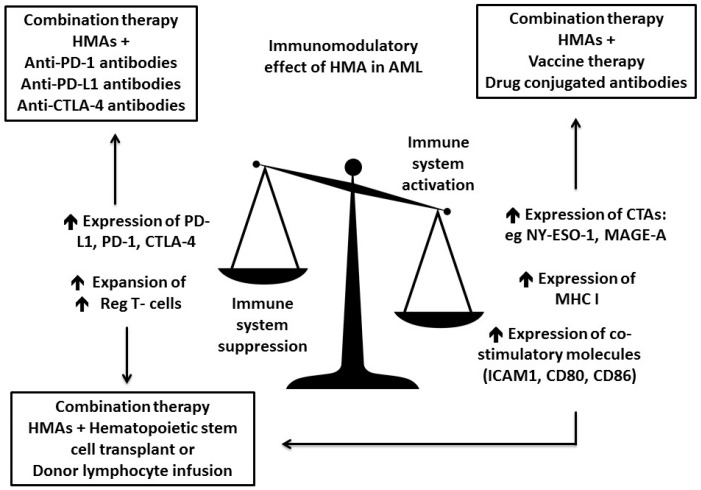Figure 1.
Hypomethylating agents (HMAs) and their role as immunomodulatory drugs in AML. HMAs possess both immuno-stimulatory, as well as immunosuppressive properties. They stimulate an immune response against AML blasts by increasing the expression of cancer testis antigens (e.g., NY-ESO-1 and MAGE-A), as well as important elements of the antigen-presenting machinery like the MHC I molecule and costimulatory molecules like ICAM1, as well as CD80 and CD86. On the other hand, HMAs can lead to immune escape of AML blasts through upregulation of immune checkpoints and their ligands, as well as regulatory T-cells. Combining the immunomodulatory effects of HMAs with other forms of immunotherapy holds the promise of a synergistic effect on the immune system. HMAs are currently combined with vaccines and drug-conjugated antibodies with the goal of increasing antigenicity and therefore AML blasts recognition and elimination by the immune system. Furthermore, combining HMA with checkpoint inhibitors might enhance the effect of checkpoint inhibitors in restoring immune surveillance. Lastly, combining HMAs with allo-HSCT or donor lymphocyte infusion is based on the hope that HMAs will enhance the graft versus leukemia effect (GVL) via enhanced antigenicity while limiting graft versus host disease (GVHD) by expansion of regulatory T-cells.

